Dangerous forts in Maharashtra boast of rugged terrain, vast history, and thrilling treks perfect for adventure seekers. From steep cliffs to narrow ridges, these treks test the endurance and determination of even the most seasoned trekkers. The “dangerous forts” of Maharashtra aren’t for the faint-hearted, and conquering them requires courage, stamina, and skill. For those ready to push their limits, these challenging routes lead to incredible views and a sense of accomplishment like no other.
10 Dangerous Forts In Maharashtra
Explore the top 10 dangerous forts in Maharashtra, offering adventurous treks, while rewarding you with awe-inspiring views and a historical journey.
1. Kalavantin Durg
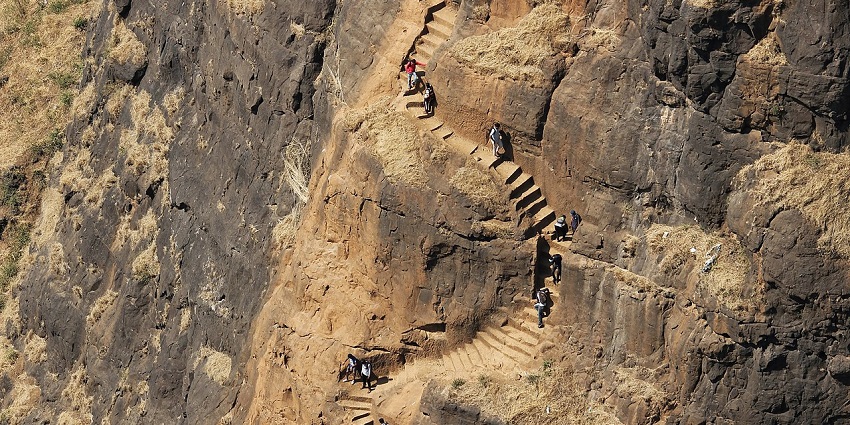
Photo: Anthonyrosyl / Wikimedia Commons
Kalavantin Durg is often regarded as one of the scariest and most dangerous forts in Maharashtra. With an elevation of 2,300 feet, it features steep, narrow rock-cut steps carved directly into the hill. With no railings or support, the trek demands a high level of alertness, especially during the descent.
Best Time To Visit: October to February
Nearest Railway Station: Panvel Railway Station
Nearest Airport: Chhatrapati Shivaji Maharaj International Airport, Mumbai
Suggested Read: Hemadpanthi Temples In Maharashtra
2. Harishchandragad

Photo: Bajirao / Wikimedia Commons
Harishchandragad is another one of the dangerous forts in Maharashtra, especially the route via the famous Konkan Kada. The trek can be demanding due to its elevation of 4,671 feet. The route features steep climbs, dense forests, rocky terrain, and the intriguing Kedareshwar Cave at the summit.
Best Time To Visit: October to February
Nearest Railway Station: Igatpuri Railway Station
Nearest Airport: Chhatrapati Shivaji Maharaj International Airport, Mumbai
3. Lingana Fort
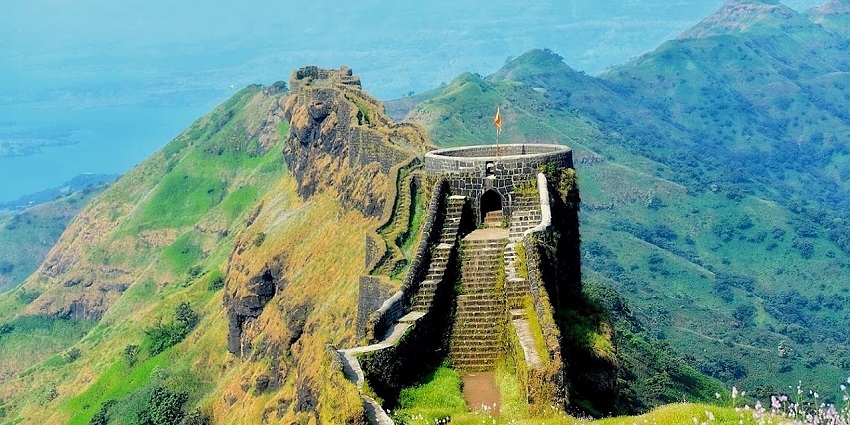
Photo: Daniel Romanson / Wikimedia Commons / Image For Representation Only
Lingana Fort is known for being one of the extremely dangerous forts in Maharashtra, often recommended only for experienced trekkers and mountaineers. Located in Raigad district, the trek to this fort involves a steep 2,300-foot vertical rock climb, requiring technical skills and equipment. With minimal safety features, it’s a risky but rewarding adventure.
Best Time To Visit: October to March
Nearest Railway Station: Pune Railway Station
Nearest Airport: Pune International Airport
Suggested Read: Best Hanuman Temples In Maharashtra
4. Alang, Madan, And Kulang Forts (AMK Trek)
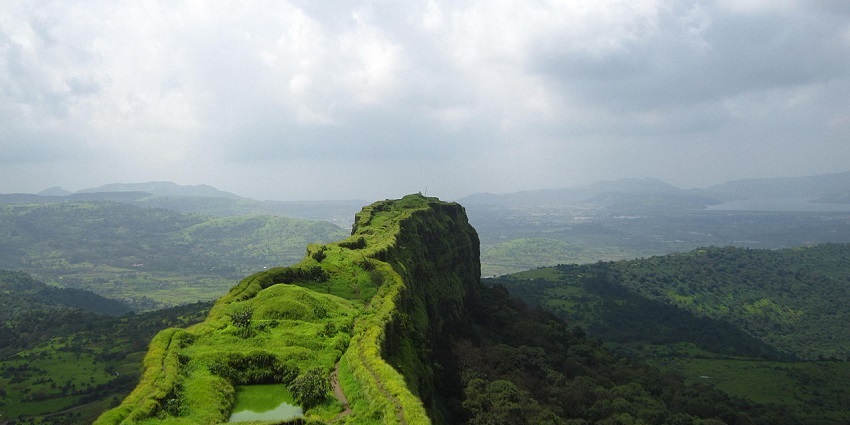
Photo: Ramji R / Wikimedia Commons / Image For Representation Only
The Alang, Madan, and Kulang (AMK) trek is considered one of the most difficult and dangerous forts in Maharashtra. This trio of forts in Nashik district requires endurance and climbing skills. The trek can take up to three days, testing both physical and mental strength.
Best Time To Visit: November to February
Nearest Railway Station: Kasara Railway Station
Nearest Airport: Chhatrapati Shivaji Maharaj International Airport, Mumbai
5. Salher Fort
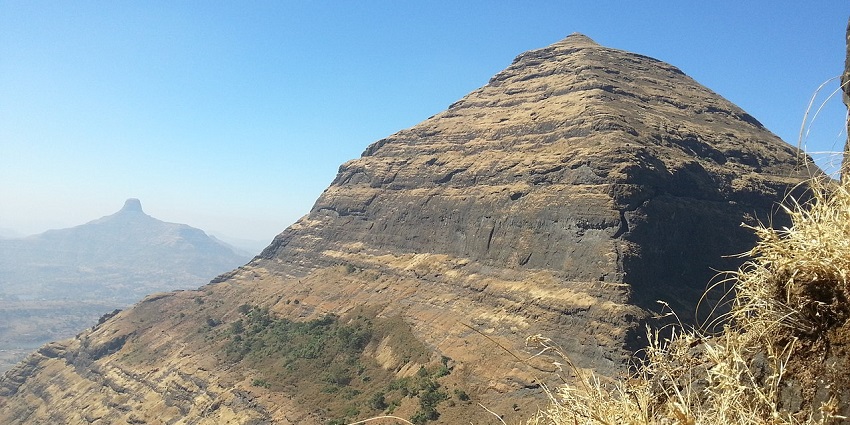
Photo: Ccmarathe / Wikimedia Commons
Salher Fort is the highest and one of the most dangerous forts in Maharashtra, standing tall at 5,141 feet. The Salher Fort trek is long and strenuous, with steep ascents and rocky terrain. Known for its historical significance from the 17th-century Maratha-Mughal battle, the fort rewards trekkers with breathtaking views of the surrounding ranges.
Best Time To Visit: October to February
Nearest Railway Station: Manmad Junction Railway Station
Nearest Airport: Chikkalthana Airport
Suggested Read: Best Devi Temples In Pune
6. Bhairavgad Fort
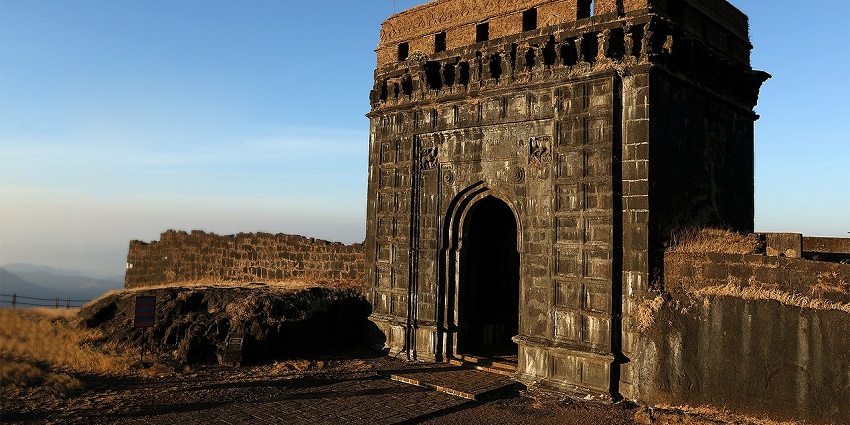
Photo: Nilamgandhre / Wikimedia Commons / Image For Representation Only
Bhairavgad Fort is one of the most dangerous forts in Maharashtra. Located near Malshej Ghat at about 3,688 feet, Bhairavgad Fort features a narrow, exposed trail that includes rock climbing at certain points. However, the challenging trek offers breathtaking views of the surrounding valleys and mountains.
Best Time To Visit: October to February
Nearest Railway Station: Kalyan Railway Station
Nearest Airport: Pune International Airport
7. Pratapgad Fort
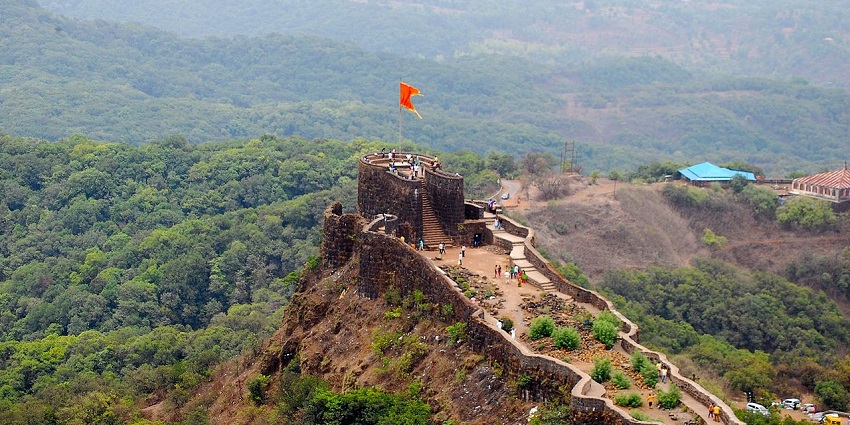
Photo: Neeraj Rane / Wikimedia Commons
Pratapgad Fort, though historically significant due to the famous battle between Shivaji Maharaj and Afzal Khan, is also one of the most dangerous forts in Maharashtra. The climb to Dategad Fort is steep and rocky, with slippery sections during the monsoon. Situated in the Satara district, this challenging ascent offers incredible views and shows Maharashtra’s Maratha heritage.
Best Time To Visit: October to March
Nearest Railway Station: Satara Railway Station
Nearest Airport: Pune International Airport
Suggested Read: Devi Temples In Maharashtra
8. Dategad Fort

Photo: Swapnaannjames / Wikimedia commons / Image For Representation Only
Dategad Fort, in the Satara district, features a steep and challenging climb. The route is poorly defined, requiring trekkers to navigate rocky patches and thick vegetation. At times, ropes are necessary for ascending vertical cliffs. While the summit is flat, reaching it demands strength and technical skill. Despite its beauty, Dategad Fort remains one of the most dangerous forts in Maharashtra.
Best Time To Visit: October to February
Nearest Railway Station: Satara Railway Station
Nearest Airport: Pune International Airport
9. Tail Baila Fort

Photo: Pushpak14795 / Wikimedia Commons / Image For Representation Only
Tail Baila Fort is renowned for its towering twin walls. The trek is highly technical, requiring rock climbing and rappelling to conquer the vertical walls. While the fort is mostly in ruins, the thrill of reaching the summit attracts seasoned trekkers. The final ascent is one of the most dangerous, making Tail Baila one of the most dangerous forts in Maharashtra.
Best Time To Visit: October to March
Nearest Railway Station: Lonavala Railway Station
Nearest Airport: Pune International Airport
Suggested Read: Hill Forts In Maharashtra Offering Serenity And Adventure
10. Harihar Fort

Photo: Elroy Serrao / Wikimedia Commons / Image For Representation Only
Harihar Fort, located in the Nashik district, is known for its vertical steps that require climbers to use both hands and feet. The top of the fort offers a flat plateau, but it’s the challenging climb that makes this trek one of the most dangerous forts in Maharashtra. The trek demands utmost focus and balance, especially during monsoon.
Best Time To Visit: October to February
Nearest Railway Station: Igatpuri Railway Station
Nearest Airport: Gandhinagar Airport, Nashik
For thrill-seekers and trekking lovers, dangerous forts in Maharashtra offer some of the toughest and most rewarding treks in India. These adventures are not just physically challenging but also test your mental strength, pushing you to your limits while rewarding you with incredible views. Each fort has its own story, filled with tales of bravery and battles, adding excitement to your trek. The feeling of accomplishment when you reach the top is unforgettable. Book your trekking experience with TripXL and explore these dangerous forts with expert guidance and support.
Cover Photo: Rashmi.parab / Wikimedia Commons / Image For Representation Only


 WhatsApp
WhatsApp
 Twitter
Twitter









